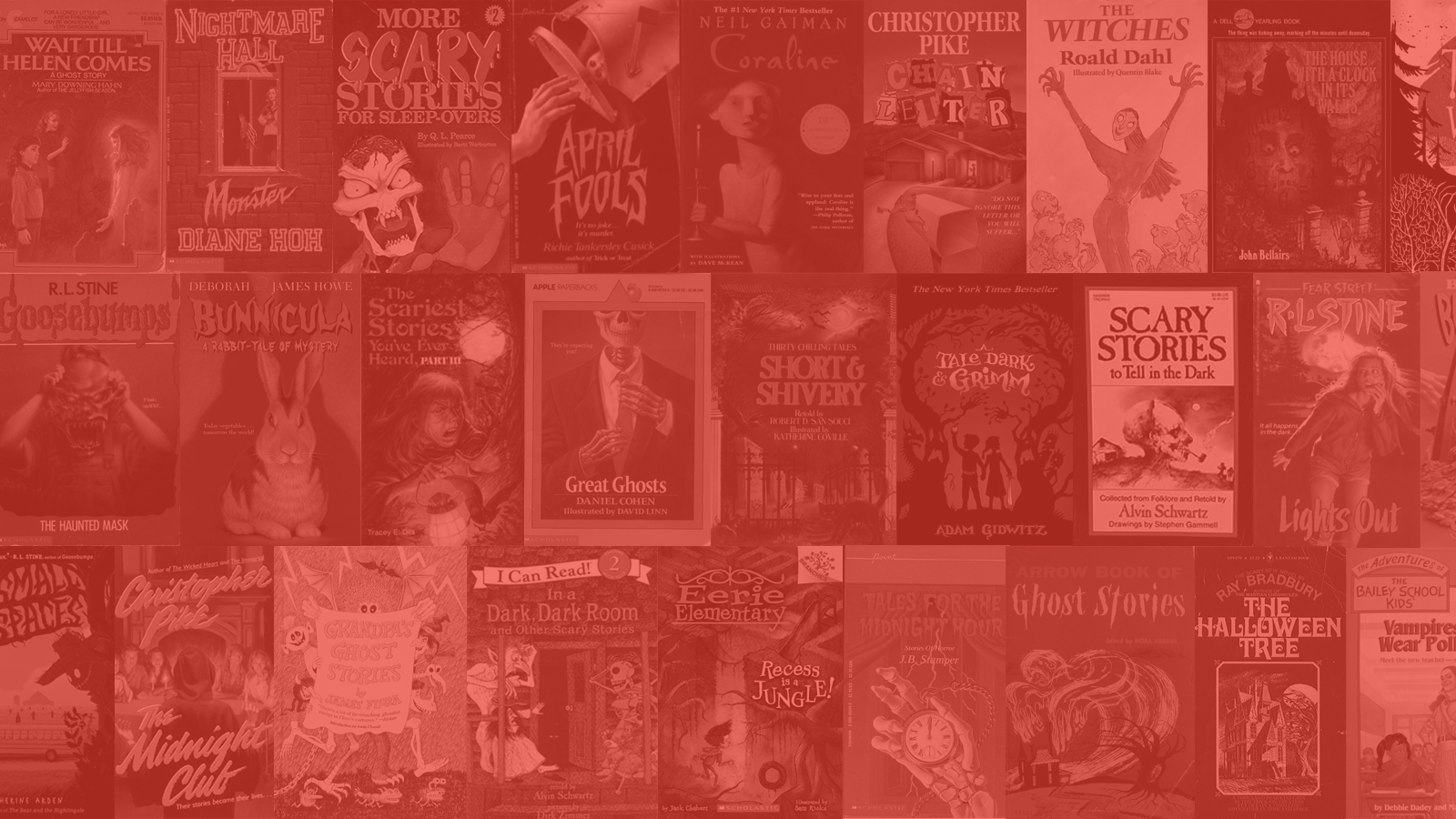70s Scary Books For Kids That Were Frightfully Good
The history of children’s books is long, with many twists and turns. So when we talk about them in the 1970s, we can’t discuss them in a bubble. The moment you try to generalize certain eras, you inevitably are focusing on certain parts of the world or certain titles while neglecting others.
That said, talking broadly about eras of time helps us make sense of the world, and our childhoods.
Scary kids books are not new, and they weren’t invented in the 1970s or 1980s, and certainly not in the 21st Century. A big reason why they aren’t new is because children’s tales were often used as cautionary tales. From Grimm’s fairy tales to Struwwelpeter, to scare children was one of the main mechanisms for learning. And that was more often than not the focus. Reading was not for enjoyment. Reading was for teaching children to be moral adults or to be safe children. And so having ugly witches or monsters as a consequence to immoral behavior was a common storytelling direction to take children’s books.
In the 20th Century it is common to discuss children’s literature as starting to take a “kids first” philosophy, where the children were the plucky protagonists and actually becoming the heroes of their own stories.
The 20th Century also became a time in which books were being published much cheaper and more affordable, with a huge impact in schools and specifically book order forms. “In 1948, a partnership with Pocket Books helped Scholastic revolutionize access to books and bring reading to the masses,” per NPR. “Teen Age Book Club (T.A.B.) specialized in books for children ages 13 to 18. Students could rip out the form on the last page of a classroom magazine and submit their order through their teacher.”
One could spend a long time going deep into the history of Scholastic and all the successful efforts to get children reading outside of assigned classroom materials. It’s notable here in order to understand what reading in the 1970s was like. School order forms were becoming the norm, and providing books that children actually wanted to read (and weren’t being forced to read) was a significant development that was still fairly new to many people.
Where do scary books for kids play into all of this? Well, as you can tell, children have been interested in scary stories for a very long time. And for many, they were finally getting them.
Arrow Books
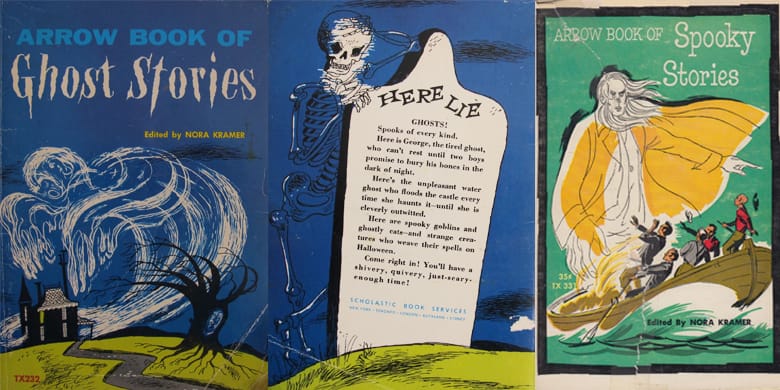
Scholastic and it’s Arrow Books dabbled in the 1960s and 1970s with books catering to children that featured all kinds of ghostly tales. From the Arrow Book of Ghost Stories (1965) to Vampires, Werewolves & Other Demons (1972) to the Arrow Book of Spooky Stories (1972) to Chilling Ghost Stories (1973) to 13 Ghostly Tales (1973). These were featured in TAB (Teen Age Book Club) and were marketed to kids starting in 7th Grade (though no doubt were often available to younger ages).
These wouldn’t be considered a cohesive series as other scary book collections later became. But the fact that these became a staple part of Scholastic and their book club and book order forms laid important groundwork for books to come. Some of the folk tales such as “Wait Til Martin Comes” and “The Golden Arm” can be found in these books and were later used in other collections such as Scary Stories to Tell in the Dark.
Further Reading:
Buy:
Maria Leach Books
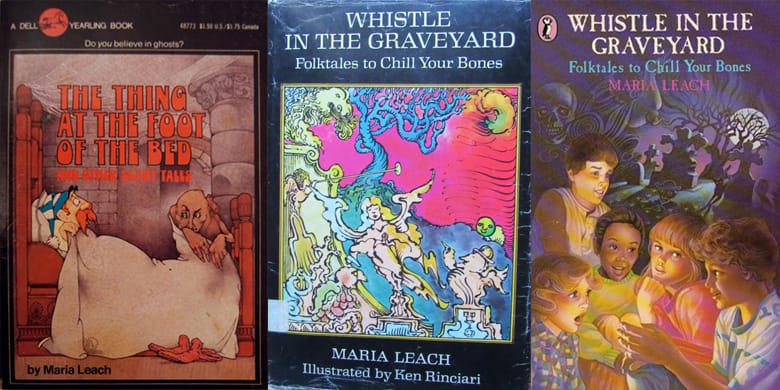
A number of individual stories from those Scholastic books came from folklorist and noted author Maria Leach. And in her we possibly have one of the most pivotal figures in modern scary kids books. And you probably have never even heard of her!
Maria Leach was a noted scholar and folklorist, possibly most known for one of the most important textbooks on the topic, Funk & Wagnalls Standard Dictionary of Folklore, Mythology, and Legend. It was some years later that she published The Thing at the Foot of the Bed and Other Scary Tales (1959) for children, which had a healthy life and was reissued several times throughout the 1960s and 1970s. She went on to author other such collections for children such as Whistle in the Graveyard: Folktales to Chill Your Bones (1974).
It is Maria Leach’s interest in the scholarly pursuit of scary stories for children that likely influenced such authors as Alvin Schwartz, Ray Bradbury, and other nonfiction examples on this list. Even the categories she used in The Thing at the Foot of the Bed was quite similar to Scary Stories to Tell in the Dark, in which they are separated by “funny ones” and “scary ones” to help children be forewarned about the upcoming tales.
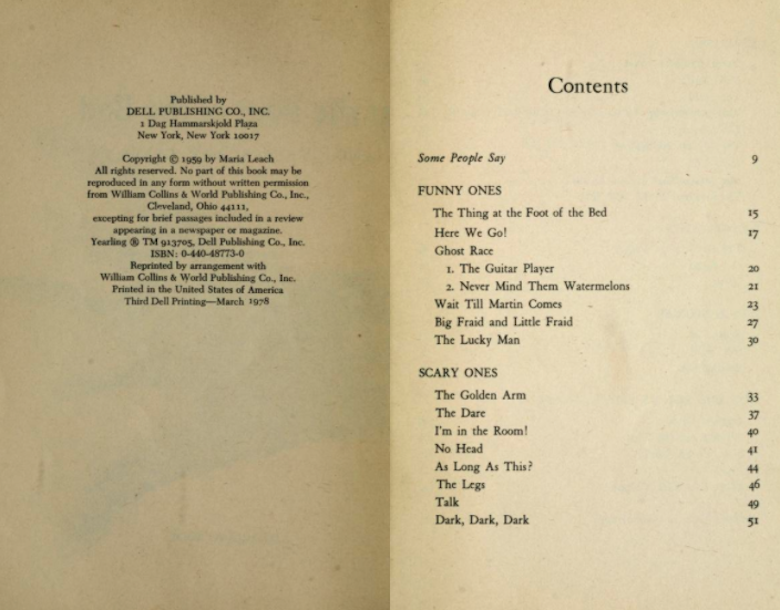
The Halloween Tree
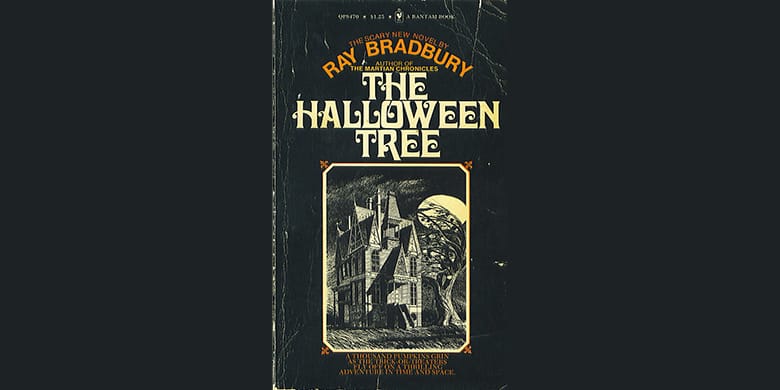
This 1972 novel by Ray Bradbury provides a wonderful connection between history and Halloween, the time of the year when children most reveal their spooky interests. It also provides another example of what runs through many scary books for kids, and that is providing a learning experience while ultimately catering to interests they have.
In the case of The Halloween Tree by Ray Bradbury, the journey these children take on Halloween night provides historical contexts to the traditions they know and love. It addresses how many different cultures tackle topics like death and the afterlife, all part of Halloween and the horror genre as a whole.
Further Reading:
Ray Bradbury’s The Halloween Tree at WKAR
The Best History Lesson Ever: Ray Bradbury and The Halloween Tree
Buy:
The World of the Unknown Books
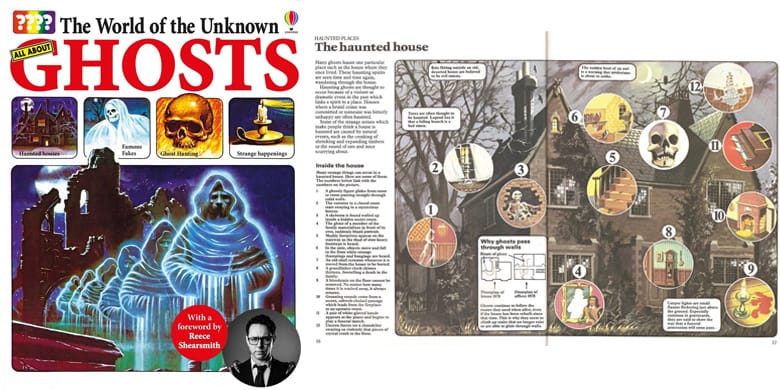
Originally published in 1977 by Usborne Publishing, this series most prominently featured Ghosts, Monsters, and UFOs as topics to explore with children. They were an introduction to horror for many children while also being in the nonfiction section, dissecting such things as the paranormal and cryptids in a format that was informational and engaging. For many adults, they were perhaps more OK with younger children checking out these books since they ultimately were textbooks (of a sort).
For many, they were essentially the kids version of Time Life Book’s Mysteries of the Unknown (another series that many read at an early age, though they weren’t marketed specifically for children).
The book series made a bit of news a few years ago when a Change.org petition lobbied to have the books reprinted… and it was successful. Many websites and people chimed in at the time, noting that the series was a formative book in their childhoods.
In 2019 the author Christopher Maynard was interviewed a few times because of this new surge of interest, including the below video from Usborne Publishing themselves. Like many titles on this list, it is indicative of many titles that made a difference without many of the authors having any idea just how popular the books were.
Further Reading:
Where Ghosts Gather… Usborne’s “Ghosts” book in the Fortean Times
‘Ghosts shaped my life’: out-of-print children’s classic to be resurrected
Buy:
John Bellairs Books
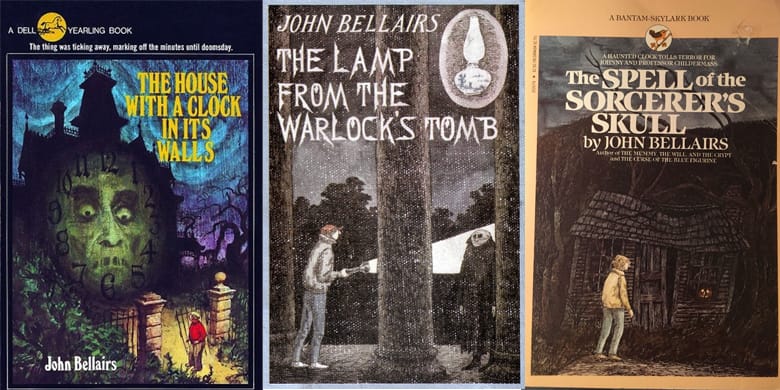
Originally written as another of John Bellairs’ many adult books, The House with a Clock in Its Walls was released in 1973 as a young adult book, suggested by his publisher as a more marketable option. That book went on to much acclaim, and thus was John Bellairs’ long foray into gothic books for children.
“I write scary thrillers for kids,” said Bellairs, “because I have the imagination of a 10-year-old. I love haunted houses, ghosts, witches, mummies, incantations, secret rituals performed by the light of the waning moon, coffins, bones, cemeteries and enchanted objects.”
John Bellairs passed away in 1991 with a substantial catalogue of children’s books under his belt, as well as awards. Much has been written about the many themes of his books, which mixed horror and thriller genres along with such topics as gender, masculinity, and magical realism.
Grandpa’s Ghost Stories
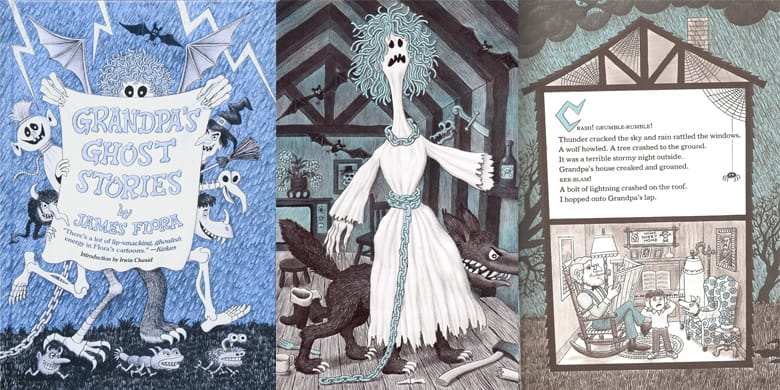
This is an interesting case of the author being a story in and of themselves. Jim Flora is a now-celebrated artist known for his music album covers of the 1940s and 50s. As described in detail on his website and in several art books, written by and maintained by cultural historian Irwin Chusid, “Flora’s designs are magically simple distillations of Cubism, Surrealism and cartoon madness, with playful figures and instruments floating in planes of color.”
It wasn’t until the 1960s and 1970s where Jim Flora turned his interests into children’s books. And wasn’t until his last few books in the late 1970s in which Jim Flora ventured into middle grade scary books. In the context of the publishing world, one can see how artists of different kinds were being nudged in the direction of scary content for kids, and Jim Flora is perhaps an example of someone with decades of experience taking on the genre in his own unique way.
In Grandpa’s Ghost Stories you see a particular artist’s sensibilities bubbling up onto the page, melding what is a flair for dark themes mixed with child-like silliness and cartoony influences.
Buy:
Tales for the Midnight Hour
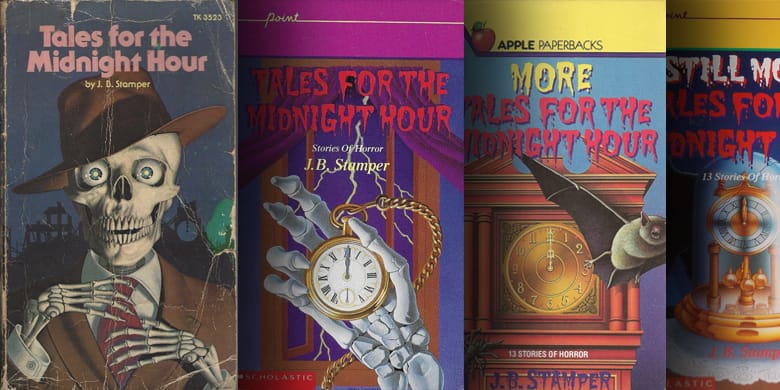
Although this book series is most known for being popular in the 1980s and after, in fact the first book was published before many of the other scary children’s books that became huge after.
Tales for the Midnight Hour by J.B. Stamper was originally published in 1977, and has been reprinted numerous time since. There is a clear connection between what this book series provided leading to the 80s, where Scary Stories to Tell in the Dark and other similar short story collections thrived.
Originally its own thing, it was later published under Scholastic’s Point Horror banner, which is something those growing up in the 1980s and 1990s came to know well. Author Judith Bauer Stamper wrote other scary-themed books for even younger children such as Five Goofy Ghosts, as well as a number of books for the popular Magic School Bus series.
Further Reading:
Buy:
Last Updated on February 2, 2022.

